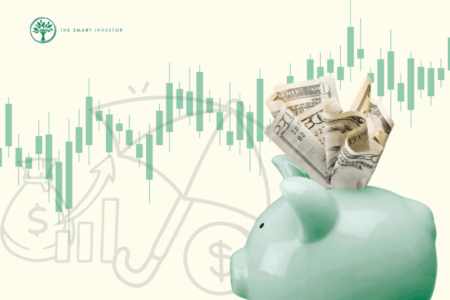Income investors prioritise dividends over growth as they seek to build a growing source of passive income.
Growth investors, on the other hand, look for growth stocks that can increase their revenue and profits, thereby netting them capital gains.
In reality, not every investor can be nicely segregated into either “income” or “growth”.
Most of us, including myself, are a little bit of both and will maintain a diversified portfolio that provides both aspects.
A scenario may crop up whereby a stock declares a higher dividend, but should investors celebrate?
The answer is that it depends.
A higher dividend may not always be a good thing.
Read on to find out why and how you can watch out for any red flags that accompany a higher dividend.
A sign of slower growth
Remember that every business has to balance between paying out some of its profits as dividends, and reinvesting their profits for growth.
Hence, a company that pays out a larger portion of its earnings as dividends may imply that it has slower growth.
Depending on what you are looking for, this may or may not be a good thing.
If your focus is on simply receiving the dividend without much expectation for growth, then such a stock could be a candidate for your portfolio.
However, do note that should the business decide on new growth initiatives and needs to channel the cash for any major capital expenditure, the dividend could be slashed.
A recent example is VICOM (SGX: WJP).
Back in 2017, the vehicle inspection company revised its dividend payout ratio (POR) to 90% of its net profit, up sharply from the previous 50%.
The result was that the business ended up paying out 120% of its earnings as dividends for 2017.
This 90% POR was in force up till 2023, when VICOM decided to reduce its POR to 70% in view of a major investment in a new test and inspection centre at Jalan Papan as part of the group’s expansion plans.
The result?
The total dividend tumbled from S$0.0664 in 2022 to S$0.055 in 2023 for a 17.2% year-on-year decline.
You need to carefully assess the business to determine if it can provide the quantum of growth or dividends that you desire.
Remember that higher dividends may translate to slower growth and vice versa, as shown in the example above.
An unsustainable payout ratio
Remember that a company can only pay out as much dividends as it earns in profits.
Therefore, a POR of 100% will represent a business that is paying out all of its earnings as dividends, implying that it is not retaining any for growth.
Alarm bells should be triggered if the POR exceeds 100% as it means that the business is paying out more than it earns and is dipping into its reserves to pay out dividends.
Although no company will consciously decide on a POR of more than 100%, this sometimes happens when the business starts to splutter but the absolute dividend is kept constant.
StarHub (SGX: CC3) is a good example where this happened.
Back in 2016, the telecommunication company paid out a total dividend of S$0.20 per share.
However, its diluted earnings per share (EPS) stood at S$0.197 for that year.
This means that its POR for 2016 slightly exceeded 100%.
Sure enough, StarHub decided to lower its dividends in 2017 to S$0.16 per year.
However, EPS for 2017 came in at S$0.141, which meant the telco was once again paying out more than 100% of its profits.
By 2019, StarHub had reduced its dividends to just S$0.0225 per quarter or S$0.09 per year as its profits continued to tumble.
2019’s EPS came in at just S$0.103, causing StarHub to abandon its quarterly dividend policy and pay a total annual dividend of just S$0.05 in 2020.
A “valuegrowth” stock
The examples above show that higher dividends alone may not make an investment attractive.
It should be just one variable among many that you analyse to arrive at a decision as to whether to invest.
So, what constitutes a positive case of higher dividends?
The answer is simple.
If the business is growing and possesses catalysts to enable it to grow further, then rising dividends should be a welcome sign.
Such stocks embody the double benefit of having both growth and dividends, and is what we term a “valuegrowth” stock.
A great example is iFAST Corporation (SGX: AIY).
The fintech reported a sparkling set of earnings for the first half of 2024 (1H 2024).
Net revenue surged 90.2% year on year to S$119.5 million while net profit leapt more than fourfold year on year to S$30.5 million.
iFAST upped its 1H 2024 dividend by 33.3% year on year to S$0.028.
Get Smart: Assess each stock
Higher dividends are mostly welcomed by investors.
However, it’s good to assess each stock on a case-by-case basis to determine if there may be red flags or concerns with this higher dividend.
Only then can you be certain that you have made the right investment decision.
We’ve discovered 5 SGX stocks that not only offer better returns than fixed deposits but also have the potential to beat inflation. Plus, these stocks provide capital growth and can significantly compound your wealth in the long term. If you’re looking to make your money work harder for you, download our FREE report for details on these five stocks.
Follow us on Facebook and Telegram for the latest investing news and analyses!
Disclosure: Royston Yang owns shares of VICOM and iFAST Corporation.





